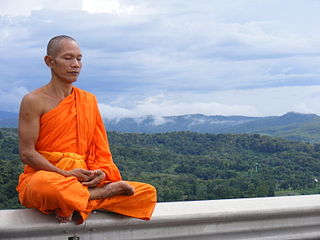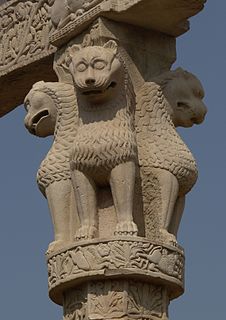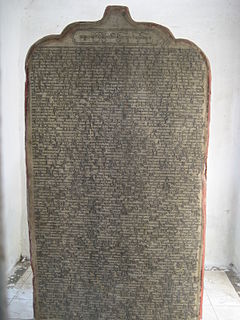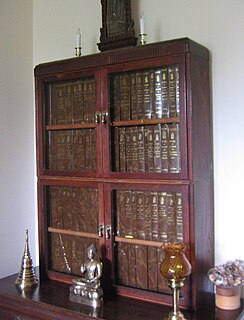| Part of a series on |
| Buddhism |
|---|
 |
| Pāli Canon |
|---|
| Vinaya Pitaka |
| Sutta Pitaka |
| Abhidhamma Pitaka |
The Anguttara Nikaya (aṅguttaranikāya; literally "Increased by One Collection," also translated "Gradual Collection" or "Numerical Discourses") is a Buddhist scripture, the fourth of the five nikayas, or collections, in the Sutta Pitaka, which is one of the "three baskets" that comprise the Pali Tipitaka of Theravada Buddhism. This nikaya consists of several thousand discourses ascribed to the Buddha and his chief disciples arranged in eleven nipatas, or books, according to the number of dhamma items referenced in them.

Theravāda is the most ancient branch of extant Buddhism today, and the one that preserved their version of the teachings of Gautama Buddha in the Pāli Canon. The Pāli Canon is the only complete Buddhist canon which survives in a classical Indian language, Pāli, which serves as both sacred language and lingua franca of Theravāda Buddhism. For more than a millennium, Theravāda has focused on preserving the dhamma as preserved in its texts, and it tends to be very conservative with regard to matters of doctrine and monastic discipline. Since the 19th century, meditation practice has been re-introduced, and has become popular with a lay audience, both in traditional Theravada countries and in the west.

Gautama Buddha, also known as Siddhārtha Gautama in Sanskrit or Siddhattha Gotama in Pali, ShakyamuniBuddha, or simply the Buddha, after the title of Buddha, was a monk (śramaṇa), mendicant, sage, philosopher and teacher on whose teachings Buddhism was founded. He is believed to have lived and taught mostly in the northeastern part of ancient India sometime between the 6th and 4th centuries BCE.
Contents
The Anguttara Nikaya corresponds to the Ekottara Āgama ("Increased by One Discourses") found in the Sutra Pitikas of various Sanskritic early Buddhists schools, fragments of which survive in Sanskrit. A complete version survives in Chinese translation by the name Zēngyī Ahánjīng (增一阿含經); it is thought to be from either the Mahāsāṃghika or Sarvāstivādin recensions. According to Keown, "there is considerable disparity between the Pāli and the Sarvāstivādin versions, with more than two-thirds of the sūtras found in one but not the other compilation, which suggests that much of this portion of the Sūtra Piṭaka was not formed until a fairly late date." [1]

The Ekottara Āgama is an early Indian Buddhist text, of which currently only a Chinese translation is extant. The title Ekottara Āgama literally means "Numbered Discourses," referring to its organizational principle. It is one of the four Āgamas of the Sanskritic Sūtra Piṭaka located in the Chinese Buddhist Canon.

The Mahāsāṃghika was one of the early Buddhist schools. Interest in the origins of the Mahāsāṃghika school lies in the fact that their Vinaya recension appears in several ways to represent an older redaction overall. Many scholars also look to the Mahāsāṃghika branch for the initial development of Mahayana Buddhism.

The Sarvāstivāda were an early school of Buddhism established around the reign of Asoka. It was particularly known as an Abhidharma tradition, with a unique set of seven Abhidharma works.





